In this article, we will examine the features of Oracle Exadata and what makes Oracle Exadata so good and unrivaled.
Oracle Exadata is often compared to IBM Power Series in today’s technology landscape.
Additionally, you can also see that it is compared to products with All-Flash disks such as Exadata Dell / EMC or Purge Storage.
In many comparison tests, you will notice that the Exadata machine (I specifically mention it as a machine) makes a clear difference to these products.
So how does this happen?
Integrated Hardware and Software
First of all, I should mention that the first difference actually emerges on the basis of architecture.
While Exadata emerges as an integrated product with both its software and hardware, its competitors present themselves as a component.
While the Exadata machine used HP products when it was first announced, with the acquisition of Sun Microsystem, it now uses products produced with its own strategy and its components are as follows.
Clustered Servers
Cluster Interconnect Network
Storage Network
active storage
Software
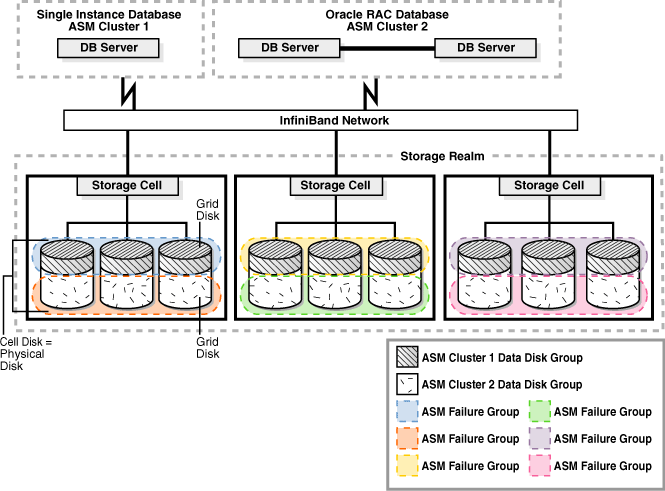
The fact that the structure is integrated shows us that we need to compare apples with apples, pears with pears.
For example, if you compare the Exadata machine with an IBM server, you will ignore the Exadata Cell, that is, the storages.
Again, if you compare the Exadata machine with Full-Flash storage products, this time you ignore the servers on it.
The Exadata machine is a whole and the parts that make up the whole create synergy and provide us with more.
For this reason, when making a comparison, it should be compared with an integrated architecture along the same lines.
Full integration with Oracle Database
It is obvious that Oracle Database is the best database in the world and can run efficiently on almost all platforms.
The necessity of an integrated architecture emerged, especially when the operating system experience gained by supporting open source systems and the innovation it implemented took it to a point beyond today’s systems.
The emergence of Exadata created a completely integrated structure with Oracle Database and Oracle Linux.
In this way, a fully stable product that speaks to each other was created.
High Availability, Redundancy, and Scalability
Exadata’s high availability and scalability structure also works with full redundancy.
This fact in the system architecture forms the basis of the design in the Exadata machine.
For example, there are at least three Exadata Cells on Exadata.
Having three products primarily provides us with redundancy and the ability to patch without interruption.
You can perform uninterrupted storage patches on Oracle Exadata or maintain existing storages on it alternately.
At the same time, it has a Cluster structure thanks to the 2 Nodes on it.
Large Memory Features (DRAM)
Unlike large and speed-requiring database servers, Exadata has DRAM feature.
It comes with 1.5TB DRAM per Node with the X7-2 model.
With this, each Node can expand horizontally up to 12TB capacity.
Thanks to DRAM, database operations are processed in memory before the physical disk, which provides performance.
What makes Exadata special?
Above, I tried to convey the most prominent features of the Oracle Exadata machine in their simplest form.
However, sub-features should also be mentioned.
SQL Offload
Active Storage – Cell Offload
Massively Parallel Processing (MPP) Design
Bloom Filters
Storage Indexes
High Bandwidth, Low Latency Storage Network
High Bandwidth, Low Latency Cluster Interconnect
Fast Node Death Detection
Smart Flash Cache
Write-Back Flash Cache
Large Write Caching & Temp Performance
Smart Flash Logging
Smart Fusion Block Transfer
NVMe Flash Hardware
Columnar Flash Cache
In-Memory Fault Tolerance
Adaptive SQL Optimization
Exadata Aware Optimizer Statistics
DRAM Cache in Storage
SQL Offload
With its first release, Exadata’s innovation was introduced as SQL Offload.
As we mentioned above, Exatada’s integrated architecture and storage structure called Cell reversed the functioning of routine queries.
While the data requested in the database is processed on the server under normal conditions, the data called via Exadata is returned via the cell and this provides serious gains in performance.
In other words, the queries you call are processed in the processor on the storage, not on the Node.
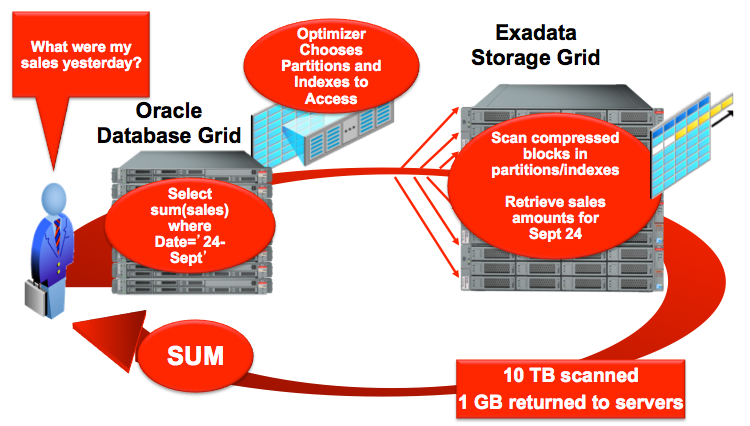
High Bandwidth, Low Latency Storage Network
It communicates with Infiniband technology among the products hosted on Exadata.
The current network structure is defined as public because it works isolated from the network where the Exadata machine is located.
In this way, secure communication is ensured. Oracle does not recommend expanding this network in its recommendations.
The Infiniband network within Exadata operates at 40 Gigabits per second.
Bandwidth is important in DWH environments and Big data studies.
Thanks to Infiniband, the Exadata machine can handle data traffic without being loaded.
However, the REDO LOG concept is of vital importance for the Oracle database.
Since Redo Log writing operations are sensitive to I/O Wait and commit operations, it is desired that the operations on the storage be at the maximum level.
Thanks to Infiniband, this process is resolved without any problems.
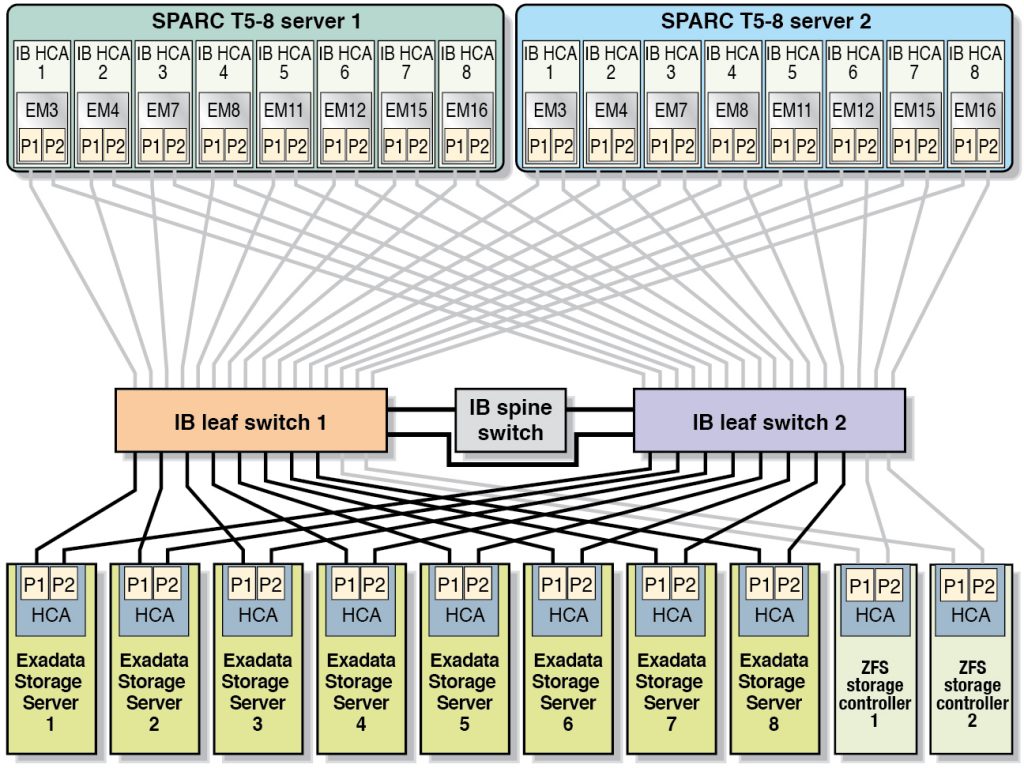
DRAM Cache in Storage
Oracle Exadata primarily uses DRAM technology for data access.
In this way, existing data is first read from the cache on DRAM instead of Disk.
In addition to the speed of Exadata Smart Flash Cache, 2.5 times more efficiency is achieved.
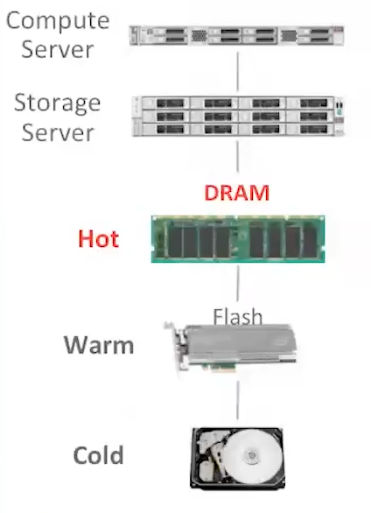
As seen in the image above, Exadata provides high performance with minimum I/O in its memory structure.
In-Memory Fault Tolerance
Oracle In-Memory feature is supported on all platforms with the 12C version when it was announced.
Running this feature on an Oracle Exadata machine provides some advantages.
The most important advantage of running the In-Memory feature on Exadata is the in-memory error tolerance specific to Exadata.
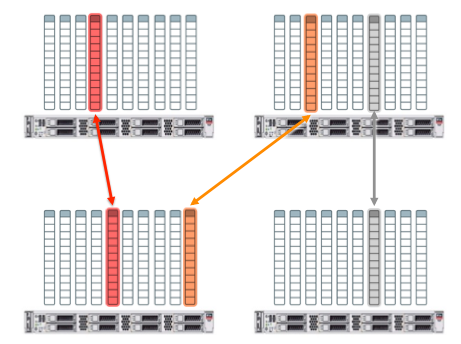
In-Memory Fault Tolerance means that data can be effectively mirrored between Oracle database nodes running on Exadata.
This feature could give developers the advantage of using DRAM cache more aggressively.
![]()
 Database Tutorials MSSQL, Oracle, PostgreSQL, MySQL, MariaDB, DB2, Sybase, Teradata, Big Data, NOSQL, MongoDB, Couchbase, Cassandra, Windows, Linux
Database Tutorials MSSQL, Oracle, PostgreSQL, MySQL, MariaDB, DB2, Sybase, Teradata, Big Data, NOSQL, MongoDB, Couchbase, Cassandra, Windows, Linux 